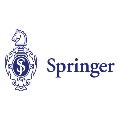Functional connectivity (FC) studies have demonstrated the overarching value of studying the brain and its disorders through the undirected weighted graph of fMRI correlation matrix. Most of the work with the FC, however, depends on the way the connectivity is computed, and further depends on the manual post-hoc analysis of the FC matrices. In this work we propose a deep learning architecture BrainGNN that learns the connectivity structure as part of learning to classify subjects. It simultaneously applies a graphical neural network to this learned graph and learns to select a sparse subset of brain regions important to the prediction task. We demonstrate the model's state-of-the-art classification performance on a schizophrenia fMRI dataset and demonstrate how introspection leads to disorder relevant findings. The graphs learned by the model exhibit strong class discrimination and the sparse subset of relevant regions are consistent with the schizophrenia literature.
翻译:功能连通(FC)研究表明,通过FMRI相关矩阵的无方向加权图,研究大脑及其障碍具有压倒性价值,但是,与FC的合作大多取决于连接计算方式,还取决于FC矩阵的人工热后分析。在这项工作中,我们提议了一个深层次学习结构BenGNN, 学习连接结构,作为学习分类科目的一部分。它同时将一个图形神经网络应用到这个学习的图表中,并学会选择对预测任务十分重要的少数部分脑区域。我们展示了该模型在精神分裂症FMRI数据集方面的最先进的分类表现,并演示了该模型如何导致与混乱有关的调查结果。模型所学的图表显示了强烈的阶级歧视和相关区域的稀少部分符合精神分裂症文献。



